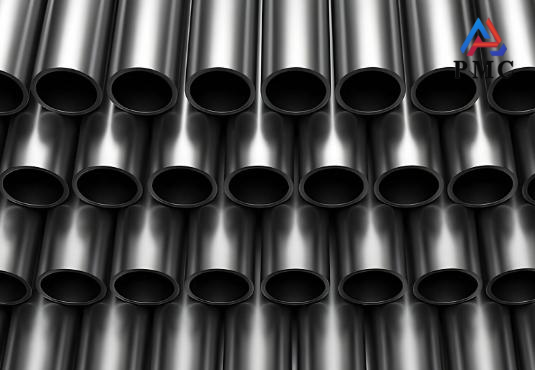
Carbon Steel Pipe vs Mild Steel Pipe
When selecting the right type of steel pipe for industrial, construction, or engineering applications, understanding the differences between carbon steel and mild steel pipes is essential. While both are widely used due to their strength, durability, and versatility, they vary in composition, mechanical properties, and typical use cases. This article explores the key distinctions between carbon steel pipe and mild steel pipe to help you make informed material choices for your specific needs.
Carbon steel pipe
Carbon steel pipe and tube, commonly referred to as CS pipe, are produced by piercing steel ingots or solid round bars into hollow shells, followed by hot rolling, cold rolling, or cold drawing. Known for their high strength and pressure resistance, carbon steel pipes are widely used in heavy industries such as infrastructure, shipbuilding, distillation equipment, and fertilizer production.
Mild steel pipe
Mild steel pipe is made from low-carbon steel (less than 0.25% carbon), offering good weldability, formability, and moderate strength. It's widely used in construction, plumbing, manufacturing, and automotive industries for carrying water, gas, and other low-pressure fluids. Though not as strong or corrosion-resistant as alloy or stainless steel, mild steel pipes can be galvanized or coated for added durability. Their low cost and versatility make them a popular choice for general structural and mechanical applications.

Difference between carbon steel pipe and mild steel pipe
Understanding the differences between carbon steel pipe and mild steel pipe is essential when choosing the right material for various industrial applications. While both are types of steel made primarily from iron and carbon, their performance, cost, and uses can differ significantly.
1. Chemical Composition
Carbon content is the key factor distinguishing these two materials. Mild steel pipe typically contains 0.1%–0.3% carbon, which gives it excellent ductility and makes it easy to weld and shape. In contrast, carbon steel pipe can contain up to 2% carbon, significantly increasing its strength and hardness. This difference in composition directly affects how each pipe behaves under pressure and stress.
2. Mechanical Properties
Carbon steel pipes, including seamless pipe types like A106 seamless pipe, offer greater strength, toughness, and corrosion resistance compared to mild steel. This makes them ideal for high-temperature and high-pressure environments. Mild steel pipes, while easier to machine and form, lack the enhanced durability of carbon steel but perform well in low-stress applications where flexibility and ease of fabrication are important.
3. Cost Consideration
Cost is another major difference. Mild steel is one of the most affordable steel types, making it a cost-effective choice for construction, furniture, and general fabrication. Carbon steel pipes, especially A106 and A53 steel pipe, are generally more expensive due to their higher carbon content and enhanced performance characteristics. However, their superior strength and longer service life often justify the additional investment in demanding applications.
4. Applications
Carbon steel pipes are widely used in oil and gas pipelines, power plants, refineries, and chemical industries—places where strength, heat resistance, and corrosion protection are critical. Popular grades like ASTM A106 seamless pipe and ASTM A53 steel pipe are especially common in pressure pipe systems. In contrast, mild steel pipes are ideal for structural projects, water transportation, fencing, and low-pressure applications where cost efficiency and workability matter more than maximum strength.
Conclusion
In conclusion, mild steel pipe is a cost-effective choice for applications requiring moderate strength, good ductility, and easy fabrication. It performs well in normal conditions and is commonly used in construction, low-pressure fluid systems, and general fabrication due to its weldability and formability.
In contrast, carbon steel pipe is ideal for high-pressure, high-temperature, and heavy-duty industrial applications such as oil and gas, power plants, and chemical processing. Although more expensive, it offers superior strength, durability, and long-term performance—especially in seamless grades like ASTM A106 and A53 steel pipes.
The right choice depends on your project’s performance demands, environment, and budget.
Read more: Seamless Pipe Vs MS Pipe


